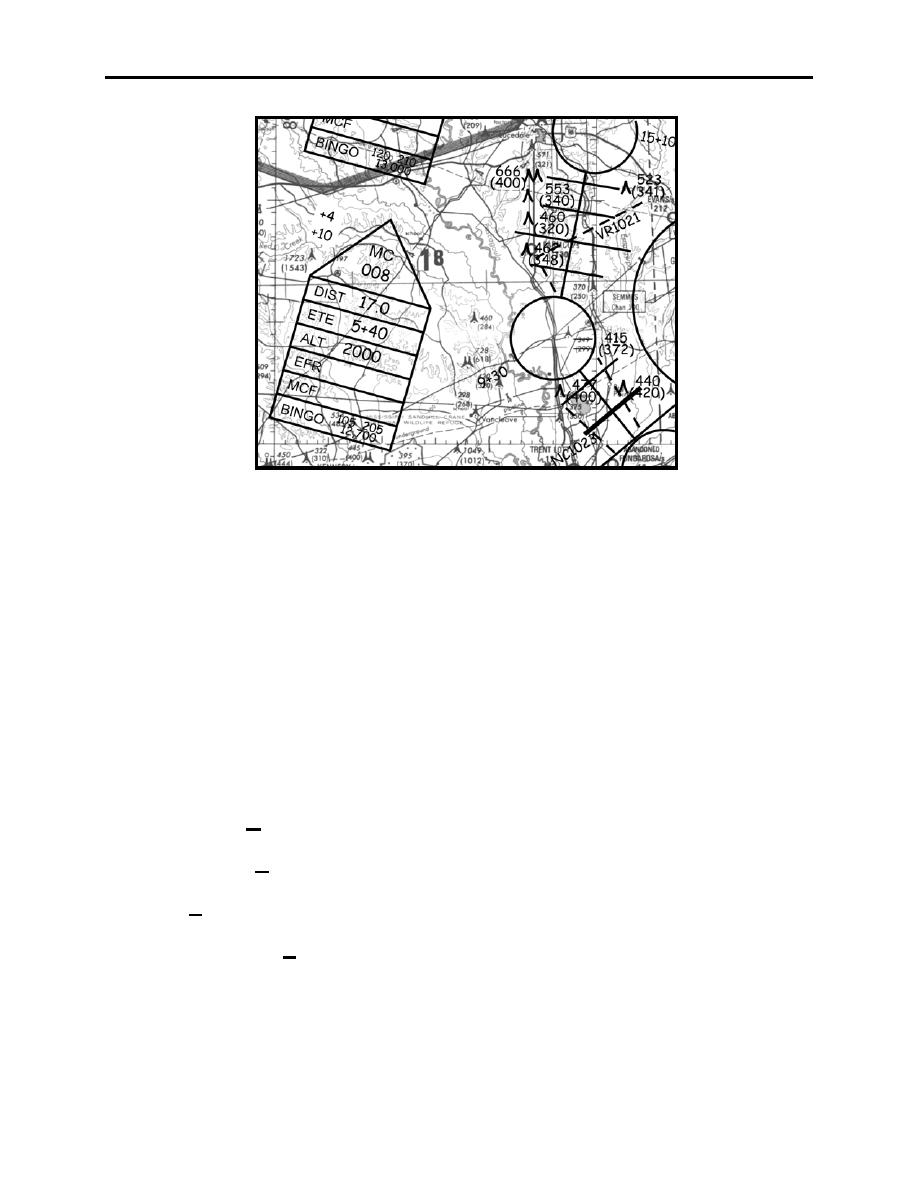 |
|||
|
|
|||
|
|
|||
| ||||||||||
|
|  T-6A NAVIGATION
CHAPTER FIVE
Using an example wind of 055 at 15 knows, resulting in a 10
knot crosswind/10 knots headwind, this figure appropriately
depicts crab and airspeed adjustments (i.e., +4 crab and + 10
knots airspeed).
Figure 5-1 2-Minute Prior Call
Before commencing the VFR portion of an IFR/VFR composite flight plan, you must terminate
the initial IFR clearance. Expect to cancel IFR (weather permitting) before the IFR clearance
limit and proceed via VFR navigation to the low-level entry point. Once VMC is encountered
(and is sustainable to the low-level altitude and point of entry), the following transmissions
apply: "AGENCY, CALL SIGN, CANCEL IFR." Note this is a report and not a request. Upon
completion of the IFR cancellation, a HATT brief should be given to the pilot. Conduct a HATT
brief anytime after canceling IFR or when exiting a route as follows:
1. Give the pilot a Heading.
2. Give the pilot an Altitude.
3. Change Transponder squawk to 1200.
4. Change frequency to Tactical (area 1 [ch.15] or route common [ch. 18]).
As described in the AIM, maintain VFR visibility and cloud clearance separation requirements at
all times while operating under VFR. At a minimum, you must be 2000 feet horizontally away
from any cloud, 500 feet below and 1000 feet above any cloud or cloud layer, and have 3 statute
miles visibility (VBAH 3512).
FLIGHT PROCEDURES
5-3
|
|
Privacy Statement - Press Release - Copyright Information. - Contact Us |